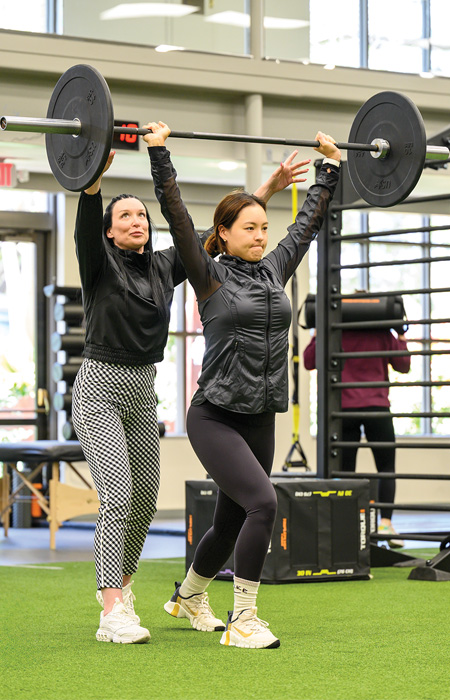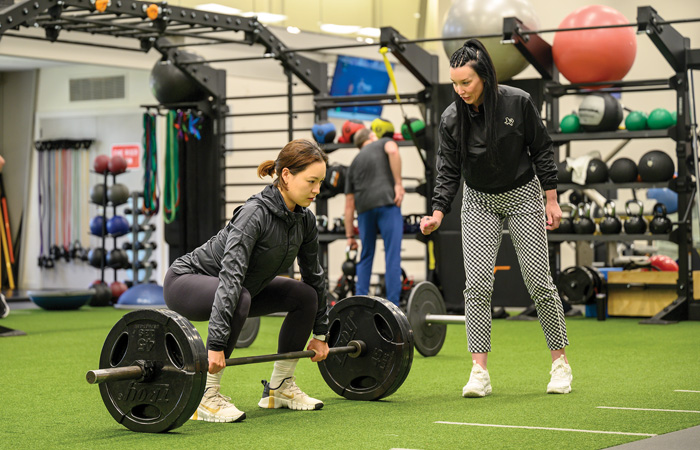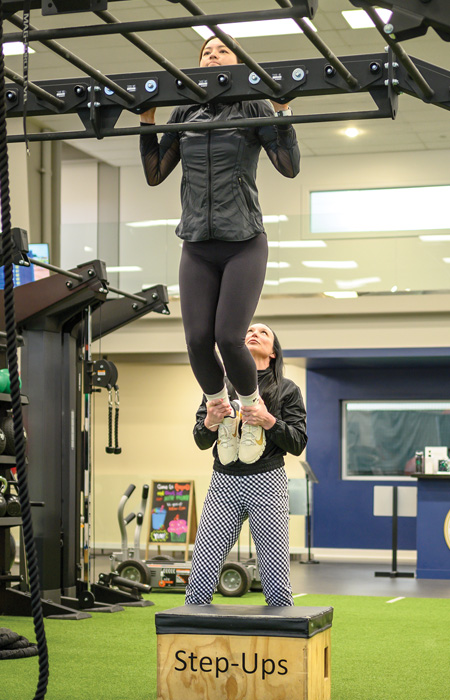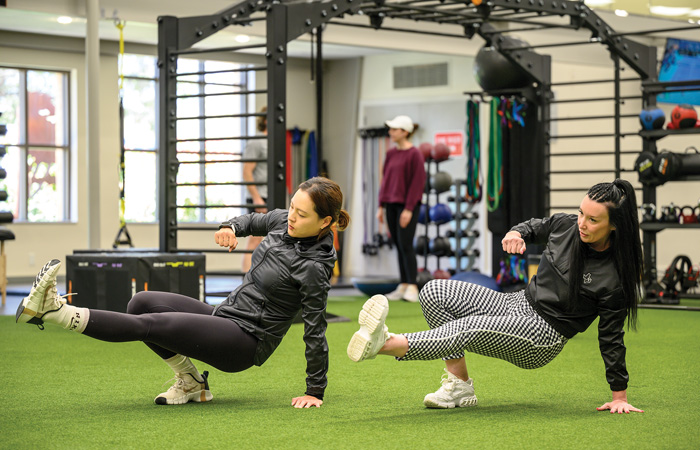When most picture the women of the LPGA, they imagine their graceful, delicate execution of each swing with the poise of a ballerina performing Swan Lake. But these women aren’t here to be kept on a shelf and admired like fine art. They are athletes … absolute beasts from tee time to the weight room.
For years, golfers feared that lifting weights would lead to injury, that strength training would disrupt their swings. But the truth? It’s the grind in the gym that keeps them powerful, explosive and injury-free. Every deadlift, squat and plyometric box jump isn’t just adding yards to their drives, it’s bulletproofing their bodies for the relentless demands of the sport.
Once perceived as fragile as little glass figurines, the women of the LPGA are proving otherwise. The only thing that’s breaking these days are their PRs in the weight room, fueling record-smashing performances on the course.
START WITH THE BASICS
The seven fundamental movements, which are the foundation for every person in fitness, squat, lunge, hinge, push, pull, rotation and gait especially apply to golf fitness programming. Here are some examples of those movements incorporated into my LPGA client’s workouts to keep them on the leaderboard:
Barbell Split Snatch

Barbell split snatch is a benefit to female golfers because the complex footwork and overhead stability it demands builds explosive power, balance and total-body coordination … exactly what’s needed to generate speed, maintain control and stay resilient through every swing. It’s not just lifting; it’s translating raw strength into game-changing performance.
Sumo Deadlift

Sumo Deadlift, or a trap-bar deadlift, is clutch in the program because the wide stance mimics the grounded power needed in a golf swing, building raw strength in the glutes, hamstrings and core while reinforcing stability and proper weight transfer. It’s not just about lifting heavy, it’s about generating force from the ground up and unleashing it through every drive.
Pull-Up

Golf demands serious shoulder control, and any variation of a pull-up – assisted, negatives, isometric or scapular – builds the scapular stability needed to lock in a consistent swing path. More control means less excess movement, more precision and better repeatability under pressure. Plus, pull-ups strengthen the lats, the powerhouse behind a strong downswing transition, ensuring every swing is smooth, controlled and explosive. You can also play around with the grip, shown here with LPGA pro In Gee Chun, a three-time world champion, who is working with rock climbing holds. Improving grip health reduces fatigue, which helps maintain precision over long rounds, especially those that span over many days.
AND THEN ADD IN A LITTLE SPICE
The golf swing power transfer path starts in the feet, then moves up through the legs into the trunk and out to the arms, down the shaft of the club and then finally at the clubhead, which is quite the complex system and needs to be trained accordingly. Here are a couple of examples of exercises that were hybridized from several schools of thought.
Row Variation

Why settle for a standard bent-over row when you can hit a bent-over row on steroids? Add a BOSU™ and TRX™, and you’re now training your full power transfer system starting from the ground up.
Twenty-five percent of your bones are in your feet, meaning an intricate web of muscles and non-contractile tissue (especially in the arch) is waiting to be trained like any other system in your body. And for golfers, foot stability is everything. Keeping the BOSU flat fires up those stabilizers while throwing in serious balance work.
Now, if that wasn’t enough, hook a leg into the TRX, push back into a low lunge, and row. This move bulletproofs hip-flexor strength and stability, while forcing your body to engage everything, feet, core, back and shoulders, just like you need in a powerful, controlled golf swing. Train the whole system, and watch it pay off on the course.
 Side Kick Through
Side Kick Through

An Animal Flow powerhouse, the Side Kick Through, is one of my go-to exercises for breath control, hip and shoulder strength and mobility. But what makes it essential for female golfers is It targets the body’s fascia slings, the interconnected web of muscle and connective tissue responsible for rotational power and stability.
This move trains fluid, explosive movement while forcing you to control your breath under tension, just like you need in a high-speed golf swing. The more efficiently your body transfers force across these slings, the more speed, stability and endurance you bring to the course. Master this, and you’ll feel the difference in every drive
These are just a few tools to add to your programming toolbox. Train like a pro and increase your performance, longevity of play and life by jumping into the gym regularly.
Mara Marek is an Elite Strength and Conditioning Coach, NASM Master Trainer, Corrective exercise Specialist, Golf Fitness Specialist, Golf Forever Coach and Ambassador, Pre/Post Natal, Clinical Specialist at The Nelson Golf & Sports Club in Las Colinas